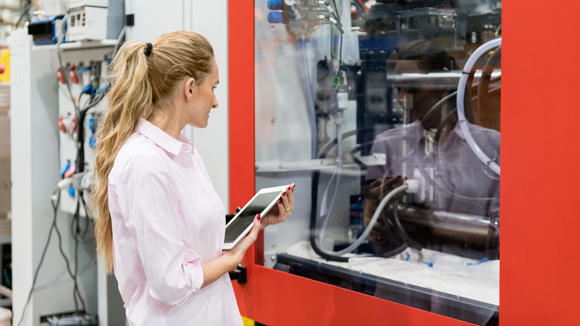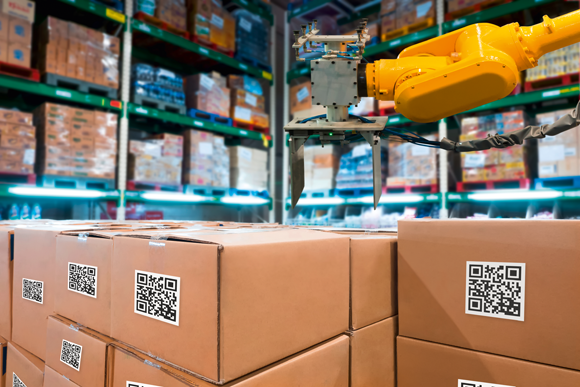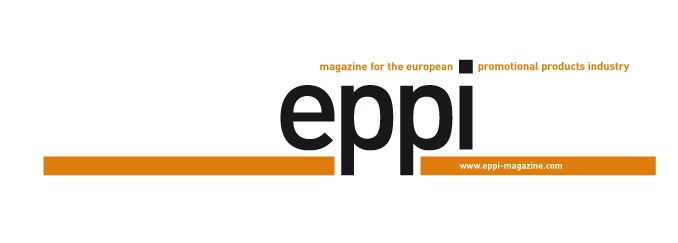In the course of the digital change 24/7 availability, swift reaction and delivery within the shortest possible time have become standards. In order to satisfy these market demands, companies are working full speed to optimise and digitalise their workflows and internal processes. A process that doesn’t begin with the programming, but at a much earlier stage.

“We will get back to you as soon as possible” – a sentence that not all too long ago was heard in every sales office a dozen times a day and which has in the meantime become an anachronism in several respects: This sentence not only requires contact between the customer and supplier or distributor – whether personally, per telephone or e-mail, which frequently doesn’t happen anymore nowadays. The fact that a piece of information is not available ad hoc occurs less and less often too. “The development is heading in the direction of real-time availability,” according to Daniel Jeschonowski, Managing Director of the writing instrument and ceramic specialist, Senator. “That applies to all areas of the company, whether employees, who can call up their working hours down to the very minute or customers, who expect real-time information on warehouse stocks, lead-times, delivery dates, indeed from one single contact partner.” Orders are placed or initiated within minutes and the goods are customised, picked and packed and handed over to the dispatch partner within a few days, if not within hours. “The warehousing and logistics demands are becoming increasingly more complex,” commented Marcus Sperber, Managing Director of the importer and plastic injection moulding firm, elasto. “As a result of the rapidly growing eCommerce segment, goods have to be stored for less time and delivered faster.” Kai Gminder, Managing Director of the textile supplier, Gustav Daiber, added: “The customer wants as much as possible as soon as possible. In the meantime we transact 70% of our turnover via eCommerce, to a large extent because the increasingly younger clientele prefer to purchase everything online.“
In order to do justice to these market changes, it does not suffice by far to simply keep the web shop, the communication infrastructure and the pool of machines up-to-date. The perhaps most important building site is found in the heart of every company: the internal processes. “Smooth, efficient and error-free processes are a deciding success factor which cannot be guaranteed without a certain degree of digitalisation,” reported Sperber. “That is why we continually optimise our processes and workflows, and have founded our own eCommerce department and expanded the IT system landscape. We engage in an exchange regularly with IT and business partners and train our employees so that they are always up-to-date.” A task that not only applies to promotional products suppliers, but also to distributors, especially large, internationally operating promotional products agencies. “Sometimes it is almost frightening how digital we have already become,” stated Steven Baumgärtner, Managing Director of Cyberwear. “In the case of standard products, the employee in the warehouse, who scans and packs the goods, is the only ‘analogue’ element of the sales process, which otherwise completely occurs online – from the order placement in the shop through to the UPS label and the digital invoice. We work to a large degree paper-free, don’t have any fax machines anymore, letters are scanned and subsequently shredded. Due to our subsidiaries being distributed worldwide the internal communications are also extremely digitalised – via Intranet, a digital invoice release book and digital meetings. Sometimes we actually have to encourage our employees to talk to each other.” The situation was totally different not all that long ago. “Five years ago we only had one employee, who was responsible for the IT – today we have 16,” continued Baumgärtner. “Two employees in Controlling permanently analyse the workflow and consider how we can become even leaner.”
Here it is not just about guaranteeing speed, but consequently also saving costs and achieving better margins. Baumgärtner: “The priority is on efficiency and quality and these factors determine further factors such as cost optimisation for instance. The more efficient we are, the higher the chances we can pass on half a percent of the margin to the customer if needs be – that wasn’t possible a few years back.” Ideally the end result is processes that from the order placement through to the picking in the warehouse are completely digitalised, which means all of the relevant information is clearly documented and can be called up immediately: Order-related information – which item, for whom, when, how – but also important questions the customer poses too like certifications and legal issues. The centrepiece of these processes: ERP (Enterprise Resource Planning). Here all business-relevant sections come together, can be observed in the broader context and can be controlled centrally.

How does one integrate the production, customisation and thousands of products? The promotional products market faces ERP systems with specific challenges.
Which software?
It is not a new question deciding which system to implement. There are numerous established ERP solutions, however not all suppliers and distributors fall back on the offers of renowned specialists such as Sourcing City, Promidata or Customer Focus, which were programmed for the promotional products industry. For example, Cyberwear navigates its workflow using Sage, “a decision we already made 15 years ago because the internal industry solutions were not suitable for our purposes – originally we were a pure textile company,” explained Baumgärtner. “SAP on the other hand concentrated on groups. So, we installed a Sage solution. This runs stably, there are worldwide versions – which is important for us as an internationally operating player – and it is simple to handle. After one week of learning-by-doing an employee is trained. Nevertheless, challenges always arise when it comes down to adapting the software to match our needs.” Because with thousands of different products, various customising options, complicated delivery chains and a heterogeneous customer structure, the promotional products market places specific demands. This particularly applies to companies with extensive warehouse stocks and a wider range of products, as well as to manufacturing and customising companies. These market players have to transfer a large number of highly complex processes into data structures and integrate these into the ERP. Sperber: “Unfortunately, there isn’t an out-of-the-box solution for us as manufacturers and importers. The various customising options, printing positions and new printing and production methods continually make complex adaptions to the ERP system necessary. Thanks to our two internal ERP programmers, we are able to react short-term here and are very flexible where adaptions are concerned. The advantage of our system is above all that it can be altered right through to the core and quickly adapted to meet our demands.”
Senator relies on SAP and according to own accounts the number of employees that use it has trebled over the past two years. This means in turn that the effort in the system administrative area increases, as Jeschonowski reported: “The systems suggest that everything is checked. So one mustn’t make the mistake of thinking “the system will take care of that’, because then one steers past the target. SAP optimises costs as brutally as possible, minimises warehouse stocks and regulates the quantities of items. If I were to define my warehouse volumes completely via SAP, they would be millions of Euros lower. However this is not possible, because our utmost priority is not the highest possible cost-efficiency, but instead customer satisfaction. It is therefore necessary to change the parameters in the system and lay down the batch sizes manually, among others we still have a large Dispatch Department for this purpose. The mix & match options that we offer for many writing instrument models can also only be covered in SAP to a certain extent.” Features of the promotional products market that are familiar from the industry software companies. Their solutions are widely distributed and quite rightly have plenty of fans, however they don’t work for all types of companies on the market, as Gminder explained: “The industryspecific systems are good, operate stably and are phenomenal especially for smaller companies. However, we grew out of them because we need a complete warehouse logistics. Furthermore, we are a textile specialist and have a corresponding depth of range including different colour combinations, sizes and models that cannot be satisfactorily integrated into many existing ERP solutions – whether industry-specific or external.”
Groundwork
That is why Daiber is currently developing its own bespoke ERP system that is tailor-made to the needs of the company – a huge task. “In the past I thought: The IT has to be adapted to suit the company, but that is not true,” Gminder stated. “Above all it is important to optimise the internal company processes to such an extent that they can actually be digitalised and meaningfully represented in the ERP. Thorsten Dirks, CEO of Telefónica Deutschland AG, already stated in 2015: ‘If you digitalise a shitty process, all you have is a shitty digital process.’ This saying hits the nail on the head.” That is why a good ERP system has to be developed before the programming operation. The demands have to be formulated, the processes defined and evaluated before the system is built. For the management this involves penetrating deep into the internal structure and questioning many processes that have been in place for many years. “I have defined down to the smallest detail what I actually want and asked the employees exactly what they do every day,” reported Gminder. “The conclusion was that it is better to carry out many work steps in a different place. Furthermore, within our company many things occurred following a ‘semi-digital’ process, own work methods were used in Outlook, Excel or using memos – I want to eliminate all these secondary processes and workarounds and transfer them into a transparent system, where everyone works exactly the same way. This is the only wayto rule out friction losses in the future. “ For Jeschonowski there is one word to explain a perfect system: Integrity. “All further decisive factors arise from the integrity of a system landscape – speed and as a result also cost-efficiency. The system mustn’t contain any redundant information, everything has to be meticulously described and defined, questions have to be posed precisely and there can only be one answer to every question.” “The computer seldom makes mistakes,” added Baumgärtner. “Once the process is established, it runs smoothly.”

The robots are on the way: For many experts switching over to almost completely digital warehouse logistics is just a matter of time.
Humans vs. machines?
And the “factor human” will in future play less of a role, because the promotional products industry will become even more digitalised over the coming years than it already is. “It will even be possible to control complicated, consulting-intensive projects with a high degree of individualisation digitally sometime in the future – I wasn’t convinced about that a year ago,” Gminder stated as an example: “I am sure that the support of digital assistance such as drones and robots will become increasingly more significant in the future. Ultimately, the change-over to a virtually completely digitalised warehouse is merely a question of time.” The classic hand-made sample is also disappearing more and more frequently in favour of faster run-throughs, digital samples are in many case matter of course. “Particularly in the case of simple orders as well as in express orders, digital approvals are asserting themselves,” explained Jeschonowski. “However, physical samples won’t disappear totally – our industry sells its products based on what the customer holds in his hand.” Baumgärtner recounted that there is one area where the human is irreplaceable: customer loyalty. “We are not the cheapest. We need customers, who want our portfolio. This also includes our spectrum of services, but also our personality as a company. And that is human nature. We don’t ask ourselves the question ‘computer or human‘. In spite of the digitalisation our headcount is growing, because the company is experiencing strong growth.” But how does one get the employees to give up processes that have established themselves over years – and which have worked well over a long period of time – in order to internalise new work processes and think more digitally? How does one convince them not to fear the digitalisation as a “job destroyer”, but instead to look at it as an opportunity and assistance?
According to Gminder a positive attitude that is also exemplified by the management is very important: “Of course, here and there the staff are frightened of being made redundant, but it is not about less employees, it is about more business. Up until now our internal digitalisation has gone down with the team much better than we expected and is being supported and confirmed. A lot of employees can’t wait for the new ERP system to be implemented.” “It is one of the most important challenges to position the company in such a way that it is open to the digitalisation,” added Sperber. “We certainly shouldn’t concentrate on individual departments such as the IT or marketing departments, we have to implement the digitalisation as a new corporate culture. Companies that don’t dare take a certain amount of risk will get left along the roadside at some point in time. The digitalisation is unavoidable.” Not only in the face of the much-discussed “disruptors” like Amazon or Alibaba, who are setting the pace in terms of eCommerce and who are noticeably forcing their way onto the market for haptic advertising, but also due to the huge pressure being asserted by the customers. “Further developments in the digital sector are 99% customer-driven,” reported Baumgärtner. “The demands of many customers are a large challenge, 100 pages of requirement specifications are no rarity. Whereby not everything the customer requires is possible. We are often caught between the marketing of the customer and their IT, which has ‘better things to do than integrate promotional products’. That is why we try to involve our own IT from the very start.”
That is just an outlook on the “external” side of digitalisation. Because of course the digitalisation of the internal processes is by no means complete yet – things are going to get really exciting again when these have to be connected to customer systems. The next part of the ‘digitalisation’ series focuses on the web shop of the future“.
// Till Barth
Bildquelle: iStockphoto/yoh4nn (2); Shutterstock/Zapp2Photo (1)



